In the vast expanse of the night sky, there lie countless stories waiting to be discovered. One such tale unfolds in the celestial realms of the Lyra constellation, where the mythical and scientific intertwine. This captivating narrative centers around a celestial harp, its brightest star Vega, and the wonders they hold. Join us on a journey that explores the mythological origins, astronomical significance, and cultural importance of Lyra. Prepare to immerse yourself in the enigmatic melodies that resonate across the cosmos and uncover the secrets of this cosmic masterpiece.
Contents
- The Mythological Origins
- The Celestial Harp in Astronomy
- The Science behind Lyra’s Formation
- Lyra in the Night Sky: Observing Tips
- Ancient and Modern Cultural Significance
- Conclusion
-
Frequently Asked Questions
- 1. What is the significance of the Lyra constellation in Greek mythology?
- 2. How did Orpheus obtain the Harp of Orpheus?
- 3. What was the role of Vega in the mythological origins of Lyra?
- 4. Is the Lyra constellation visible to the naked eye?
- 5. What is the shape of the Lyra constellation?
- 6. Can I observe the Lyra constellation from any location?
- 7. What is the best time to view the Lyra constellation?
- 8. How can I identify Lyra and Vega in the night sky?
- 9. What cultural significance does Lyra hold?
- 10. Are there any astrological interpretations associated with Lyra?
- References
-
Frequently Asked Questions
- 1. How did the Lyra constellation get its name?
- 2. What is the mythological significance of the Harp of Orpheus?
- 3. Which star is the brightest in the Lyra constellation?
- 4. How can I locate the Lyra constellation in the night sky?
- 5. What is the scientific explanation for the formation of Lyra?
- 6. Can I observe the Lyra constellation without a telescope?
- 7. Are there any cultural references to Lyra in ancient mythology?
- 8. What are some modern astrological interpretations of Lyra?
- 9. Can I observe the Lyra constellation from any location on Earth?
- 10. Is the Lyra constellation mentioned in any other cultural contexts?
- References
- Read More
The Mythological Origins
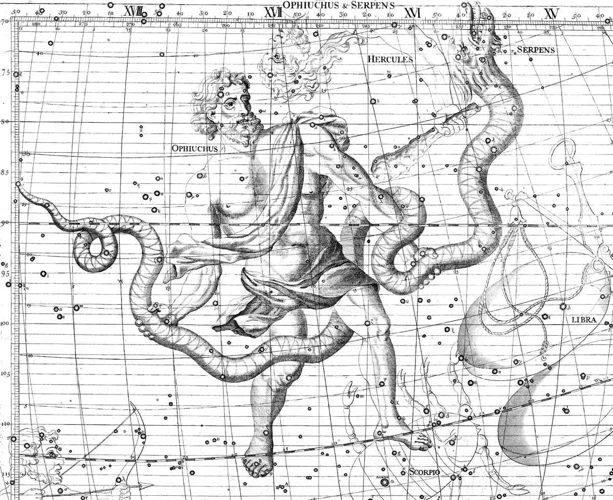
In the realm of ancient Greek mythology, the Lyra constellation and its celestial harp have a rich and fascinating history. The origins of this tale can be traced back to the legendary musician Orpheus. According to the myth, Orpheus possessed extraordinary musical talent and was capable of moving even the most unyielding hearts. The gods were so captivated by his melodies that they bestowed upon him a harp that possessed mystical powers.
The Harp of Orpheus, also known as the Lyre of Orpheus, became a powerful symbol of music, poetry, and inspiration. It was said that the harmonious tunes produced by this celestial instrument could stir emotions, heal wounds, and even charm the gods themselves. Orpheus’ mastery of the harp allowed him to navigate the realms of the living and the dead, with his enchanting melodies having the ability to tame the ferocious beasts and soothe the tormented souls in the underworld.
One of the brightest stars in the Lyra constellation, Vega, played a significant role in this mythological tale. Vega represented the celestial anchor for the harp, with its brilliance symbolizing the exceptional musical prowess of Orpheus. The star Vega, often referred to as the “Harp Star,” shines brightly in the night sky, serving as a reminder of the mythical origins of the Lyra constellation and the power of music to transcend mortal boundaries.
The story of Orpheus and the celestial harp continues to inspire artists, musicians, and poets to this day. Its enduring legacy reminds us of the profound impact that music and creativity can have on our lives, transcending the boundaries of time and space.
For more information on ancient mythology and poetry, check out our article on Roman Clothing and Fashion.
The Harp of Orpheus
The Harp of Orpheus, also known as the Lyre of Orpheus, holds a prominent place in Greek mythology and is deeply intertwined with the Lyra constellation. This mythical instrument was not just an ordinary harp but possessed extraordinary powers and significance.
According to the legend, the Harp of Orpheus was crafted by the god Hermes himself. It had a frame made of shining gold and strings made from the sinews of a sacred ram. The harp’s celestial origin bestowed upon it the ability to produce divine melodies that could move the heavens and the earth.
Orpheus, a renowned musician and poet, was gifted this extraordinary instrument by the gods. With his incredible musical talent, he was able to harness the true potential of the Harp of Orpheus. When Orpheus played this mythical harp, the world around him would be transformed. His captivating melodies had the power to calm the seas, sway the trees, and charm even the wildest creatures.
The Harp of Orpheus played a crucial role in several mythological tales. One of the most famous stories tells of Orpheus’ journey to the Underworld to rescue his beloved wife, Eurydice. Armed with his magical harp, Orpheus played such sorrowful tunes that even Hades, the ruler of the Underworld, and his cold-hearted queen, Persephone, were moved to tears. This resulted in Eurydice being granted a chance to return to the realm of the living.
The Harp of Orpheus serves as a symbol of the power of music, its ability to transcend boundaries, and its capacity to touch the deepest emotions of both gods and mortals alike. Its association with the Lyra constellation further emphasizes the harmonious connection between the celestial realm and the realm of human creativity.
To learn more about finding balance and harmony in your everyday life, take a look at our article on Top Tips for Organizing Your Home.
Vega: The Harp’s Brightest Star
Vega, the brightest star in the Lyra constellation, takes center stage in the mythical narrative of the celestial harp. This dazzling star holds a prominent position in the night sky, capturing the imagination of stargazers throughout history. With a visual magnitude of 0.03, Vega ranks as one of the 20 brightest stars visible from Earth. Its luminosity and beauty make it a key player in the Lyra constellation’s captivating tale.
Vega, also known as Alpha Lyrae, belongs to the spectral type A0V, indicating its blue-white hue and its classification as a main-sequence star. Its celestial coordinates place it at approximately 25 light-years away from Earth, making it relatively close in astronomical terms. As a result of its proximity, Vega provides astronomers with a valuable opportunity to study and understand the lives of stars similar to our Sun.
This stellar beauty has many notable attributes. Vega possesses a rapid rotational speed, completing a full rotation on its axis in a mere 12.5 hours. This swift rotation causes it to flatten slightly at its poles and bulge at its equator, giving it an oblate shape. Additionally, Vega is around twice as massive as the Sun and radiates approximately 37 times more energy. Such qualities contribute to its brilliance and make it an excellent candidate for scientific research.
Beyond its astronomical significance, Vega has had cultural and historical importance as well. This star served as a crucial point of reference during the development of astrometry, the branch of astronomy that deals with the precise measurements of celestial objects. It played a crucial role in determining the fundamental properties of stars and their distances in our galaxy.
In astrology, Vega has been associated with attributes like intelligence, creativity, and artistic talent. Its influence is said to be bestowed upon those engaged in artistic pursuits, inspiring them to reach new heights of expression. Astrologers believe that Vega’s energy encourages individuals to tap into their creative potential and embrace their unique talents.
To learn more about different zodiacs and their interpretations, check out our article on Understanding the Differences Between Western and Vedic Zodiacs.
The Celestial Harp in Astronomy
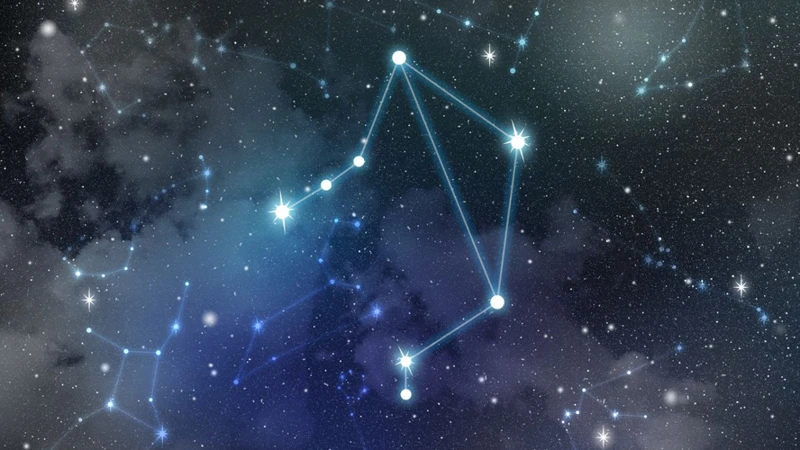
The Lyra constellation, with its celestial harp, holds a special place in the realm of astronomy. Let’s delve into the fascinating aspects of this constellation and its significance:
Firstly, let’s explore the shape and location of the Lyra constellation. Lyra is easily recognizable due to its distinct harp-like shape, featuring a triangular body and a crossbar representing the strings of the harp. It is located in the northern hemisphere, nestled between the constellations Cygnus and Hercules. Its proximity to the Milky Way makes it a prime location for stargazing and observing celestial wonders.
Vega: A Star of Many Superlatives
At the heart of the Lyra constellation, we find Vega, its brightest star and one of the most remarkable stars in the night sky. Vega holds several noteworthy titles in the field of astronomy. For starters, it is the fifth-brightest star visible from Earth and one of the three stars that make up the prominent asterism known as the Summer Triangle, along with Deneb and Altair. Vega is considered a remarkable reference point for navigational purposes due to its high visibility and position.
Vega’s remarkable characteristics extend beyond its brightness. It is classified as a spectral type A0V main-sequence star, also known as an A-type dwarf. Its size is about twice that of our Sun, with a surface temperature around 9,500 Kelvin. Vega is also relatively young, estimated to be only around 455 million years old. Its youthfulness and exceptional luminosity make it a subject of great interest for astronomers studying stellar evolution.
Vega’s role in the Lyra constellation and its prominence in the night sky make it an essential component in the astronomical study of this celestial harp.
Discover more about the wonders of the night sky and tips for observing celestial phenomena in our article on Top Tips for Organizing Your Home.
The Shape and Location of Lyra
When it comes to the shape and location of the Lyra constellation, it is recognizable for its unique features. Lyra is situated in the northern hemisphere and is easily visible during the summer months. It is nestled between the neighboring constellations of Cygnus and Hercules. The constellation itself takes the form of a small parallelogram, symbolizing the resonating echoes of the celestial harp.
To locate Lyra in the night sky, one can begin by identifying the bright star Vega, which serves as the constellation’s focal point. Vega, known as the “Alpha Lyrae,” is one of the most prominent stars in the summer triangle, formed by Vega, Deneb, and Altair. This triangle of stars acts as a celestial pointer to guide stargazers towards the Lyra constellation.
As the night deepens and Lyra rises higher in the sky, its distinct shape becomes more apparent. The parallelogram pattern is formed by four stars – Vega, Sheliak, Sulafat, and Delta Lyrae. While Vega steals the spotlight as the brightest star in Lyra, the other stars contribute to the overall splendor of the constellation.
The shape and location of Lyra make it an intriguing sight for sky enthusiasts and astronomers alike. Its proximity to other prominent constellations and its easily recognizable form add to its allure in the night sky. Whether you’re a seasoned astronomer or a curious observer, exploring the shape and location of Lyra can be a mesmerizing experience.
Vega: A Star of many Superlatives
Vega, the bright star at the heart of the Lyra constellation, is a celestial gem that holds numerous superlatives. Let’s explore the remarkable characteristics that make Vega a star of exceptional significance.
1. **Brightness**: Vega shines as one of the brightest stars in the night sky, captivating observers with its luminosity. Its brilliance makes it easily identifiable and a prominent feature within the Lyra constellation.
2. **Blue-White Beauty**: Vega belongs to the spectral class A0V, indicating a hot and relatively young star. Its stunning blue-white color adds to its visual allure, standing out against the backdrop of darker celestial objects.
3. **Nearest Bright Star**: Vega holds the distinction of being one of the closest stars to us that can be seen with the naked eye, albeit at a distance of approximately 25 light-years. This proximity allows us to study and appreciate its unique properties in more detail.
4. **Rapid Rotation**: Compared to many other stars, Vega spins with high velocity. Its fast rotation gives rise to a prominent equatorial bulge, causing it to have a slightly flattened shape. This distinctive characteristic sets Vega apart from the more spherical stars in the night sky.
5. **A North Star in the Future**: Due to the Earth’s axial precession, Vega will become the North Star, or the pole star, around the year 14,000 AD. This means that in the future, navigators and stargazers will use Vega as a reference point for orientation, just as Polaris currently serves that role.
6. **Debris Disk**: Vega is also known for its debris disk, a vast ring of dust and debris surrounding the star. This disk is believed to be the remnants of planetesimal collisions in the early stages of planetary formation. Studying this debris disk provides valuable insights into the formation and evolution of planetary systems.
The stellar characteristics and unique properties of Vega contribute to the overall allure and fascination surrounding the Lyra constellation. As we gaze upon Vega’s majestic radiance, we are reminded of the vast wonders and mysteries that the cosmos holds.
If you’re interested in learning more about celestial bodies and their significance, check out our article on Understanding the Differences Between Western and Vedic Zodiacs.
The Science behind Lyra’s Formation
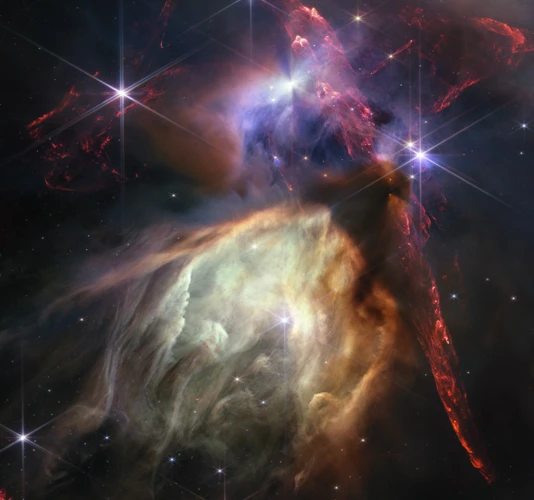
The formation of the Lyra constellation, scientifically speaking, is a fascinating journey that spans billions of years. It begins with the birth and evolution of stars within vast clouds of gas and dust known as nebulae. These nebulae are stellar nurseries where gravity pulls the materials together, eventually leading to the formation of protostars.
Over time, the intense gravitational forces and the fusion of hydrogen atoms in the protostars’ cores initiate nuclear reactions, causing them to ignite as true stars. As these stars continue to evolve, they release tremendous amounts of energy in the form of light and heat, shaping the landscape of the Lyra constellation.
One star that prominently influenced the formation and history of Lyra is Vega. Vega is a young, blue-white star that stands out not only for its brightness but also for its high rotational velocity. This fast rotation causes Vega to flatten at the poles and bulge at the equator, giving it an oblate shape.
Vega’s intense stellar winds and radiation have had a profound impact on the surrounding nebulae, dispersing and sculpting the gas and dust clouds in the region. These celestial processes further contribute to the distinctive shape and characteristics of the Lyra constellation, making it a captivating sight in the night sky.
To gain a deeper understanding of the differences between the Western and Vedic zodiacs, explore our article on Understanding the Differences between Western and Vedic Zodiacs.
Stellar Evolution: From Nebulae to Lyra
Stellar evolution is a remarkable process that shapes the birth, life, and ultimate fate of stars. The journey from a vast cloud of interstellar gas and dust, known as a nebula, to the formation of the Lyra constellation involves several intricate stages. It all begins with the gravitational collapse of a nebula, causing it to contract and spin faster. As the contraction continues, the core of the nebula becomes hotter and denser, eventually igniting nuclear fusion. This pivotal moment marks the birth of a star.
Over millions of years, the star continues to burn hydrogen in its core, radiating immense amounts of energy as light and heat. As hydrogen depletes, the star undergoes changes, expanding into a red giant and shedding its outer layers. In this phase, vast clouds of stardust are released, enriching the surrounding space with heavy elements.
This shedding process often results in the formation of beautiful planetary nebulae, intricate and colorful remnants of dying stars. These remnants, along with the stardust, disperse into the cosmos, becoming part of the interstellar medium, which serves as the raw material for future generations of stars.
Lyra, nestled within the interstellar medium, represents the formation of numerous stars from these enriched clouds of dust and gas. As new stars begin to take shape, their gravitational pull brings them together, forming clusters and associations within the constellation. These stellar nurseries continue to evolve, giving rise to a myriad of stars with varying sizes, temperatures, and stages of evolution.
The journey from a nebula to the formation of stars in Lyra showcases the awe-inspiring process of stellar evolution. It highlights the interconnectedness of celestial objects and the continuous cycle of creation and destruction that shapes our universe. The stars within Lyra serve as a testament to the ever-evolving nature of the cosmos, captivating stargazers and astronomers with their beauty and scientific significance.
The Role of Vega in the Constellation’s History
Vega, the brightest star in the Lyra constellation, holds a significant place in its history and mythology. As an integral part of Lyra’s stellar tapestry, Vega has fascinated astronomers and stargazers for centuries. Its importance stretches far beyond its luminosity, encompassing various scientific and cultural aspects.
From an astronomical perspective, Vega’s prominence lies in its spectral classification as an A-type main-sequence star. This categorization indicates that Vega is a relatively young star, still in the prime of its life. Its blue-white brilliance and high surface temperature make it a standout feature in the night sky, attracting the attention of both professionals and amateur astronomers alike.
Vega’s role in the constellation’s history is not limited to its visual appeal. It has played a crucial part in scientific discoveries and landmarks. For instance, Vega served as a fundamental reference star for the astrometric system in the 1800s, aiding in the measurement of stellar distances and the calibration of telescopes. This system relied on Vega’s position in the sky, known as its declination and right ascension, to determine the coordinates of other celestial bodies.
Vega’s proximity to the celestial north pole enhances its importance in the field of astronomy. Due to the Earth’s axial precession, or wobbling motion, Vega will eventually become the North Star in around 14,000 years. This phenomenon marks a significant change in the orientation of the Earth’s rotational axis and has played a critical role in navigational history.
Beyond its scientific significance, Vega has captured the imaginations of various cultures and societies. In Chinese mythology, it is a part of the “Weaving Maiden” and “Cowherd” legend, in which two star-crossed lovers are separated by the Milky Way but allowed to meet once a year. This tale adds a romantic and poetic dimension to the already enchanting presence of Vega in the constellation.
Vega’s enduring legacy in the history of Lyra speaks volumes about the interplay between science, mythology, and human fascination with the cosmos. Its bright radiance and multiple facets of symbolism continue to captivate and inspire stargazers, reminding us of the interconnectedness between the celestial bodies and our collective human narrative.
Lyra in the Night Sky: Observing Tips
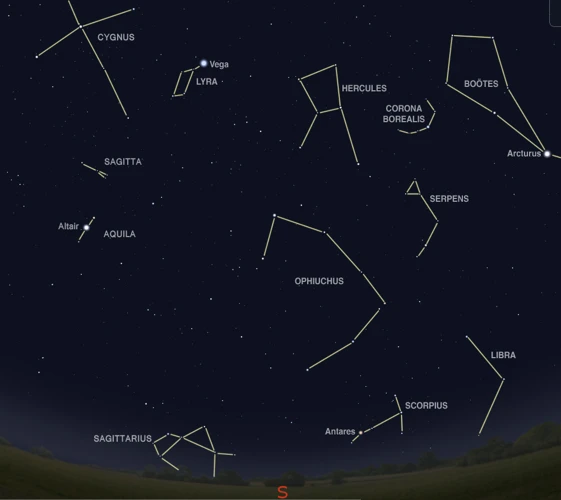
When it comes to observing the Lyra constellation in the night sky, there are some useful tips that can enhance your stargazing experience. Here are a few pointers to help you navigate the celestial wonders of Lyra:
1. Best Viewing Locations and Times: To optimize your chances of spotting Lyra, it’s essential to find a location with minimal light pollution. Head to a dark sky site, away from the glare of city lights, for the best visibility. Additionally, try to observe during moonless nights or when the moon is in its crescent phase, as this will minimize its brightness and allow the stars of Lyra to shine more prominently.
2. Identifying Lyra and Vega: Lyra is a small constellation located in the northern hemisphere. Look for its distinctive shape, often described as a parallelogram or a small diamond in the sky. The brightest star of Lyra is Vega, which serves as an excellent starting point for locating the constellation. Spotting Vega’s brilliance can guide you towards the other stars that form the shape of the celestial harp.
3. Binoculars and Telescopes: While Lyra can be observed with the naked eye, using binoculars or a telescope can enhance your view and reveal more intricate details. Binoculars are particularly helpful in capturing the beauty of Vega and its surroundings, allowing you to discern multiple stars and perhaps even catch a glimpse of Lyra’s ethereal shape.
4. Capture Astrophotography: If you’re an avid astrophotographer, Lyra offers fascinating opportunities. With a camera and tripod, you can capture the enchanting beauty of this constellation and immortalize the fainter stars that may not be visible to the naked eye. Experiment with different exposure times to capture the intricate details and awe-inspiring patterns of Lyra.
Remember, patience is key when stargazing. Take your time to let your eyes adjust to the darkness and allow the wonders of Lyra to reveal themselves. Whether you’re a seasoned astronomer or a curious beginner, observing the Lyra constellation is an experience that will leave you in awe of the vastness and beauty of our universe.
For more information on understanding celestial constellations, check out our article on the Differences Between Western and Vedic Zodiacs.
Best Viewing Locations and Times
If you’re eager to witness the beauty of the Lyra constellation and its star Vega, knowing the best viewing locations and times will greatly enhance your stargazing experience. Here are some tips to help you make the most of your observations:
1. Dark Sky Areas: To fully appreciate the celestial wonders of Lyra, it is best to find a location away from the light pollution of urban areas. Look for dark sky areas, such as national parks, rural countryside, or designated stargazing sites. These locations provide optimal conditions for observing the brilliance of Vega and the rest of the Lyra constellation.
2. Seasonal Considerations: Lyra is visible in the Northern Hemisphere during the summer months. Plan your stargazing excursion between late spring and early autumn when the nights are clearer and the constellation is at its highest point in the sky. This will give you the best chance to spot the distinctive shape of the Lyra constellation and the stunning brightness of Vega.
3. Viewing Times: The best time to observe Lyra and Vega is during the late evening and early morning hours. Wait until after sunset, when the sky has darkened sufficiently to reveal the stars. As the night progresses, Lyra will ascend higher in the sky, offering a more unobstructed view of the constellation and its vibrant star.
4. Observing Equipment: While the Lyra constellation can be seen with the naked eye, using a telescope or binoculars can enhance your viewing experience. These tools enable you to explore the finer details of Vega and other celestial objects within the constellation. Consider bringing a star chart or a smartphone app to aid in identifying the exact location of Lyra and its brightest star.
Remember, patience and a sense of wonder are key when stargazing. Take your time to adjust your eyes to the darkness and allow the mysteries of Lyra to unfold before you.
To learn more about stargazing and other celestial observations, check out our article on Top Tips for Organizing Your Home.
Identifying Lyra and Vega
Identifying the Lyra constellation and its brightest star, Vega, in the night sky can be an engaging endeavor for stargazers and astronomy enthusiasts. To locate Lyra, it is helpful to begin by identifying the prominent summer triangle, formed by three bright stars: Vega in Lyra, Deneb in Cygnus, and Altair in Aquila. Vega, in particular, stands out due to its brilliance and proximity to the summer triangle.
Look towards the northeastern sky during the summer months, and you will see Lyra ascending on its celestial journey. Vega, gleaming with a bluish-white radiance, acts as Lyra’s guiding light. Its position within the summer triangle makes it relatively easy to locate. Trace an imaginary line from Vega to Deneb or Altair, and you will be able to outline the shape of the celestial harp, with Vega serving as its apex.
For precise identification, using a star chart or a mobile astronomy app can be beneficial. These tools help map out the positions of the stars and constellations based on your location and time of observation. By aligning the star patterns with the chart or app, you can confidently identify Lyra and Vega, further enriching your stargazing experience.
Remember, finding Lyra and Vega might require patience and practice, especially if you are in an area with significant light pollution. Choose a clear, dark night away from city lights for optimal visibility. With perseverance and a sense of wonder, you will soon be able to spot Lyra’s celestial harp adorned by the mesmerizing brilliance of Vega, connecting with the cosmic tales of the past and marveling at the wonders of the universe.
If you’re interested in exploring more about the zodiacs and their differences, take a look at our article on Understanding the Differences Between Western and Vedic Zodiacs.
Ancient and Modern Cultural Significance
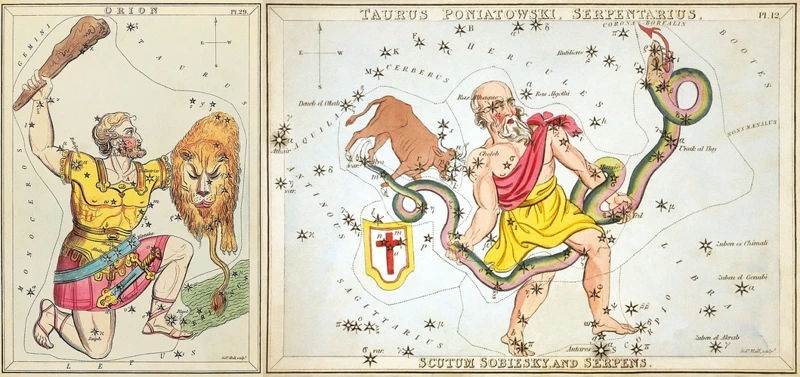
Ancient and modern cultures alike have found significance in the Lyra constellation and its celestial harp. In ancient Greek mythology, the story of Orpheus and the Lyre of Orpheus served as a source of inspiration for poets, musicians, and artists. The harp symbolized the power of music to evoke emotions, transcend boundaries, and connect with the divine. The Lyra constellation became a celestial representation of this mythological tale, reminding people of the enduring legacy of creativity and the enchanting melodies that resonate across time.
In modern times, the Lyra constellation continues to captivate stargazers, astronomers, and enthusiasts. Its prominent star, Vega, one of the brightest in the night sky, has garnered attention and fascination. Vega’s brilliance and position within the harp-shaped constellation have made it a popular subject for observation and astrophotography. Its proximity to the celestial equator makes it visible from various parts of the world, allowing people from different cultures to appreciate its celestial beauty.
Beyond its astronomical significance, the Lyra constellation has also found its way into various cultural expressions. In literature and poetry, Lyra often represents the embodiment of music, creativity, and inspiration. It serves as a reminder of the power of art to transcend boundaries and touch the depths of human emotions. In music, the celestial harp of Lyra has inspired composers and musicians to create ethereal compositions that evoke a sense of wonder and enchantment.
In astrology, Lyra and its star Vega have been associated with themes of creativity, artistic expression, and spiritual awakening. Some interpret the constellation as a cosmic symbol of inspiration, guiding individuals to tap into their inner creativity and pursue their passions wholeheartedly.
The ancient and modern cultural significance of the Lyra constellation and its celestial harp showcases the enduring power of music, creativity, and artistic expression. Across different civilizations and time periods, the tale of Orpheus and the celestial harp has left an indelible mark on human culture, reminding us of the transcendent nature of the arts and the beauty that lies within the night sky.
For more articles on astrology and zodiacs, explore our guide on Understanding the Differences Between Western and Vedic Zodiacs.
Lyra in Ancient Mythology and Poetry
Lyra, the celestial harp, holds a significant place in ancient mythology and poetry, captivating the imagination of civilizations throughout history. In Greek mythology, apart from its association with Orpheus, Lyra is also linked to the story of Apollo and his musical talents. Apollo, the god of music and the arts, is often depicted holding a lyre, which some believe to represent the Lyra constellation. This connection reinforces the notion that Lyra represents the power of music and artistic expression.
In ancient poetry, Lyra frequently finds mention as a symbol of inspiration and creativity. It is often associated with the Muses, the nine goddesses of the arts and sciences. The Muses were believed to be the source of divine inspiration for poets, musicians, and artists. Lyra, as the embodiment of harmonious melodies, was closely tied to their influence. Many poets of antiquity, including Ovid and Pindar, referenced the harmonious strings of the celestial lyre in their verses, invoking its enchanting power to evoke emotions and transport their audience to ethereal realms.
The constellation’s significance in ancient mythology and poetry transcends the boundaries of Greece. In Norse mythology, the Lyra constellation is associated with the tale of the god Odin, who, like Orpheus, sought wisdom and understanding through music. Odin, known as a master musician, possessed a magical harp, which created melodies capable of revealing hidden knowledge. The inclusion of Lyra in this mythos underscores its universal symbolism of music as a gateway to higher realms of knowledge and inner enlightenment.
Even in modern times, Lyra’s influence on artistic expression and creativity remains strong. Musicians draw inspiration from the constellation’s celestial harp, weaving melodic narratives that resonate with audiences worldwide. The poetic symbolism associated with Lyra continues to inspire writers, encouraging them to explore the depths of their imagination and foster a deeper connection with the mystical power of music.
Lyra’s presence in ancient mythology and poetry signifies its enduring significance as a celestial symbol of music, inspiration, and creativity. Its association with legendary figures like Orpheus, Apollo, and Odin underscores its universal appeal and serves as a reminder of the profound impact that music and artistic expression have on human culture throughout the ages.
Astrological Interpretations and Beliefs
The Lyra constellation has not only captured the imagination of ancient mythologists but has also held significance in various astrological interpretations and beliefs. In astrology, the constellation of Lyra is associated with qualities like creativity, harmony, and artistic expression. Those born under the influence of Lyra are believed to possess a natural inclination towards music, poetry, and the arts. Their souls are said to be attuned to the rhythmic melodies of the universe, making them intuitive and sensitive individuals.
According to astrologers, the star Vega, the brightest luminary in Lyra, is regarded as a significant celestial body in interpreting birth charts. Its influence is believed to bring forth traits such as charisma, creativity, and a love for performing arts. Those born under Vega’s influence are thought to possess a magnetic presence that captures the attention of others. They have the potential to rise to great heights in the realms of art, music, and entertainment.
In addition to personal horoscopes, Lyra’s presence in the night sky holds astrological significance for different zodiac signs as well. For example, when Lyra aligns with the sun sign Leo, it is believed to enhance artistic expression and creative endeavors for individuals born under this sign. It inspires them to showcase their talents and bask in the limelight.
It’s important to note that astrology is a subject of belief and interpretation, and its influence on individuals can vary. While some may find resonance and connection with the astrological significance of Lyra, others may not. Nonetheless, the mythical and symbolic nature of the constellation continues to fascinate those who find wonder in the cosmic dance of stars and their potential influence on our lives.
To explore more about astrology and zodiac signs, read our informative article on Understanding the Differences between Western and Vedic Zodiacs.
Conclusion

The celestial tale of the Lyra constellation and its mythical harp, intertwined with scientific understanding, unveils a captivating story that transcends time and space. From the mythological origins of the Harp of Orpheus to the astronomical significance of Vega, the brightest star in Lyra, we witness the harmonious blend of ancient legends and modern scientific exploration.
Lyra’s mesmerizing beauty in the night sky continues to inspire stargazers and astronomers alike. As we delve into the science behind Lyra’s formation, we unlock the mysteries of stellar evolution and the crucial role Vega plays in shaping this celestial masterpiece.
For those eager to experience the wonders of Lyra firsthand, we provide insightful tips for observing this constellation. Identifying Lyra and its bright star, Vega, among the countless celestial bodies can be a delightful challenge for both amateur and seasoned sky-watchers. By exploring the best viewing locations and learning about the optimal viewing times, you can begin your journey of celestial discovery.
Throughout history, Lyra has influenced ancient mythology and poetry, captivating the imaginations of storytellers across civilizations. We explore the cultural significance of Lyra, from its portrayals in ancient myths to its interpretations in astrology and beliefs. The ancient tales and celestial wonders of Lyra continue to resonate in the modern world, reminding us of the enduring power of human imagination and the vast mysteries of the cosmos.
In conclusion, the story of Lyra and its celestial harp, led by the enchanting star Vega, transports us beyond the boundaries of our earthly existence. Embracing both myth and science, Lyra connects us to the magic of ancient legends while igniting our curiosity about the cosmos. So, let us gaze into the night sky, listen to the celestial melodies, and embark on a journey that binds the heavens and our imagination in celestial harmony.
Frequently Asked Questions

1. What is the significance of the Lyra constellation in Greek mythology?
In Greek mythology, the Lyra constellation is associated with the legendary musician Orpheus and his celestial harp. It symbolizes the power of music, poetry, and inspiration.
2. How did Orpheus obtain the Harp of Orpheus?
According to myth, the gods bestowed the Harp of Orpheus upon him as a reward for his extraordinary musical talents and ability to move hearts with his melodies.
3. What was the role of Vega in the mythological origins of Lyra?
Vega, the brightest star in the Lyra constellation, represented the anchor for the celestial harp of Orpheus. Its brilliance symbolizes the exceptional musical prowess of the legendary musician.
4. Is the Lyra constellation visible to the naked eye?
Yes, the Lyra constellation is visible to the naked eye, particularly during the summer months in the northern hemisphere.
5. What is the shape of the Lyra constellation?
The Lyra constellation is often described as resembling a small parallelogram or a triangular harp-like shape.
6. Can I observe the Lyra constellation from any location?
The Lyra constellation can be observed from various locations around the world, as long as the sky is clear and free from excessive light pollution.
7. What is the best time to view the Lyra constellation?
The best time to view the Lyra constellation is during the summer months, specifically July and August, when it reaches its highest point in the night sky.
8. How can I identify Lyra and Vega in the night sky?
To identify Lyra and Vega, look for their distinctive harp-like shape and locate the bright star Vega, which serves as a prominent marker for the constellation.
9. What cultural significance does Lyra hold?
Lyra holds cultural significance in ancient mythology and poetry, symbolizing the power of music, creativity, and the transcendence of mortal boundaries.
10. Are there any astrological interpretations associated with Lyra?
Yes, in astrology, Lyra is believed to bring a sense of harmony, artistic inspiration, and creative expression to individuals born under its influence.
References
Frequently Asked Questions

1. How did the Lyra constellation get its name?
The Lyra constellation derives its name from the lyre, a musical instrument associated with the Greek myth of Orpheus. In Latin, “lyra” means lyre or harp.
2. What is the mythological significance of the Harp of Orpheus?
The Harp of Orpheus holds great significance in Greek mythology. According to the legend, Orpheus, a gifted musician, used his celestial music to charm all living beings, including rocks and trees. When he died, the gods placed his lyre among the stars, forming the constellation Lyra.
3. Which star is the brightest in the Lyra constellation?
Vega, also known as Alpha Lyrae, is the brightest star in the Lyra constellation. It shines with a luminosity that captivates stargazers and has played a significant role across various cultures throughout history.
4. How can I locate the Lyra constellation in the night sky?
To locate the Lyra constellation, look for Vega, its brightest star, which forms the apex of a small triangular pattern of stars. The triangle represents the body of the celestial harp. Lyra can often be spotted in the summer months in the northern hemisphere.
5. What is the scientific explanation for the formation of Lyra?
The Lyra constellation formed through the process of stellar evolution. Nebulae, consisting of gas and dust, collapse under gravity, giving rise to the formation of stars such as Vega. Over time, these stars disperse the nebulae and create a distinct constellation in the night sky.
6. Can I observe the Lyra constellation without a telescope?
A telescope is not necessary to observe the Lyra constellation. It can be seen with the naked eye, especially in areas with low light pollution. However, using binoculars or a small telescope can provide a clearer view of the stars and the triangular shape of the celestial harp.
7. Are there any cultural references to Lyra in ancient mythology?
Yes, Lyra holds significant cultural references in ancient mythology. In Greek mythology, Lyra represents the lyre of Orpheus. It is also associated with the myth of Hermes inventing the lyre, which he then gifted to Apollo. The harp’s celestial depiction has inspired poets, musicians, and artists throughout history.
8. What are some modern astrological interpretations of Lyra?
From an astrological perspective, Lyra is associated with creativity, harmony, and the ability to create beauty through artistic expression. It is believed to enhance musical talent, creativity, and the pursuit of emotional well-being. Individuals with a strong connection to Lyra may possess a deep appreciation for the arts.
9. Can I observe the Lyra constellation from any location on Earth?
Yes, the Lyra constellation can be observed from various locations on Earth, provided there are clear skies and minimal light pollution. However, its visibility depends on the observer’s latitude. The constellation is more prominently visible in the northern hemisphere.
10. Is the Lyra constellation mentioned in any other cultural contexts?
Yes, the Lyra constellation is mentioned in Chinese mythology, where it is associated with the myth of the Azure Dragon. In this myth, Vega represents the eye of the dragon. Additionally, Lyra has been referenced in various poems, songs, and literary works across different cultures over the centuries.







